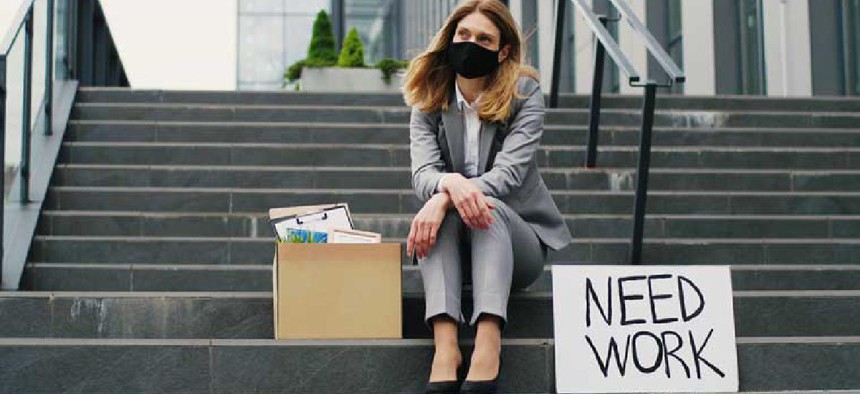State, local governments shed jobs as pandemic continues


Connecting state and local government leaders
State and local government payrolls shed 182,000 jobs in September, according to the most recent jobs report from the Bureau of Labor Statistics.
The COVID-19 pandemic has had a significant impact on public sector employment, especially at the state and local level.
While federal employment ticked down by 34,000 jobs, largely driven by exiting temporary Census workers, state and local government payrolls shed 182,000 jobs in September, according to the most recent jobs report from the Bureau of Labor Statistics.On a year-over-year basis, the figures are striking. In September 2019, BLS reported 1.8% unemployment among public sector workers. In September 2020, that jumped to 4.1%.
The overall unemployment rate declined slightly, to 7.9%, with the economy adding 661,000 jobs in September. But permanent job loss outstripped temporary layoffs, suggesting that the employment recession caused by the COVID-19 pandemic will have lasting effects even if the spread of the virus is checked through a vaccine or public health measures.
If the economy is slow to recover and unemployment remains high, state and local governments will have to cut back on spending to compensate for lower tax revenues. Much of that spending, according to a Deloitte Q3 economic analysis, comes from the salaries of state and local government workers. Deloitte forecasts “that the number of people employed by state and local governments falls by about 1 million by late 2021 (beyond the 500,000 decline in the second quarter), although we also assume that most of those workers will be rehired in 2022.”
Lee Saunders, president of the American Federation of State, County and Municipal Employees, called for the Senate to take up a new round of pandemic stimulus and relief that includes funding for state and local governments.
The House of Representatives passed a revised $2.2 trillion relief bill on Thursday by a vote of 214-207. No Republicans supported the bill and 18 Democrats also opposed the measure.
"Even though this bill doesn't include everything we believe is necessary, it represents another good faith effort to work across the aisle to ensure that millions of Americans get the economic lifeline they desperately need," Saunders said in an Oct. 2 statement. "And it invests in the public services – including health care, child care and sanitation – we need to beat this pandemic and safely reopen the economy."
This article was first posted to FCW, a sibling site to GCN.
NEXT STORY: DIY guide to installing low-cost flood sensors





